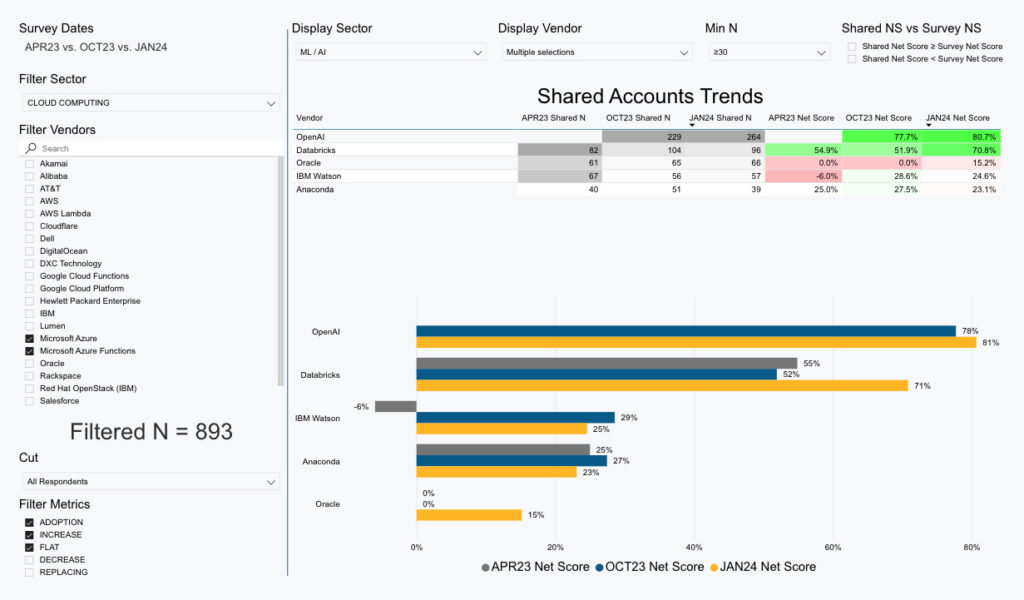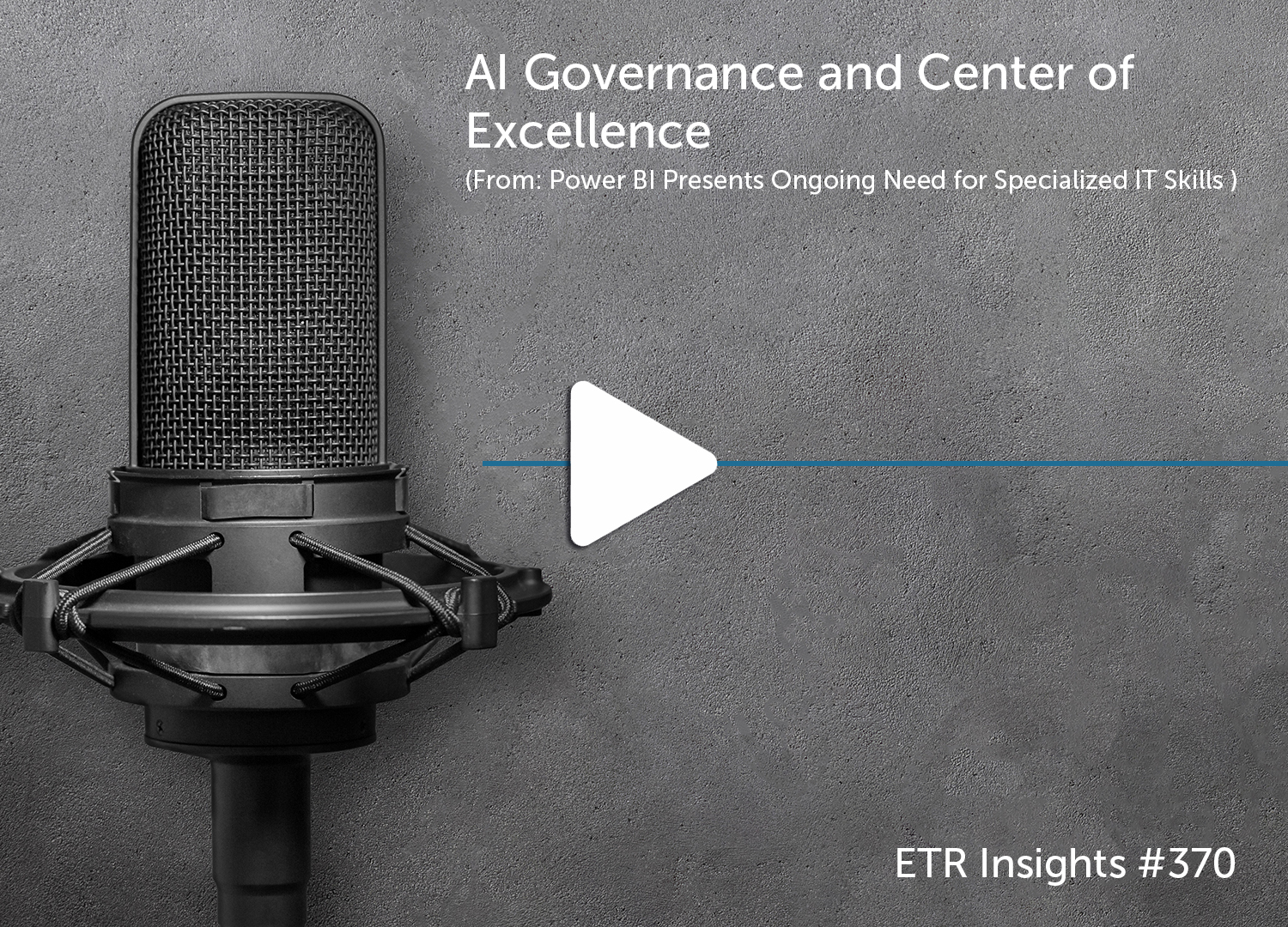ETR Insights presents an interview with an Enterprise Architect for a large tech services and consulting enterprise, who is enthusiastic about increasing IT budgets and the need to develop IT frameworks to support AI/ML. They highlight the widespread adoption of low-code applications and the prominent role of generative AI at their company, particularly for chatbots and summarizing data. Data quality and organization are crucial, requiring a blend of AI and human intelligence to manage and interpret data. They praise Microsoft for its collaboration and project management, though more complex tools like Power BI present an ongoing need for specialized IT skills. Read on to learn why this organization rarely engages with specialized IT solutions, why they have adopted Figma company-wide, and why our guest is finding it difficult to justify Microsoft Copilot’s considerable licensing costs.
Vendors Mentioned: 8×8 (Fuze) / Databricks / Figma / K2 / Microsoft (Azure, Copilot, GitHub, Power BI, Power Platform, Office 365) / Nintex / OpenAI / ShareGate / UiPath
Interview Summary
Our guest expressed optimism about IT spending based on adoption of AI/ML, which will require its own IT framework. “There are so many new technologies and workloads coming. I do see more IT spend there in every business. There are low-code applications popping up everywhere. Every department is asking for those automations.”
Generative AI is “number one right now.” This company is not just experimenting but actively deploying AI, with AI- powered chatbots that engage in Q&A and AI tools that synthesize summaries from various documents. Their clients are similarly curious, though concerned about governance. “They don’t want to obviously open it up for everyone.
They want to use it in a controlled way.” The organization has established an internal center of excellence to address the delicate balance of technology use and information security, and is doing POCs to demonstrate that data can remain secure. “It’s basically three people who are champions, who are researching very deep into these technologies. We derive some data points around it. How do we mitigate the risk? How do we take this to customers? How do we address their pain points, questions, or challenges?”
Our guest discussed the importance of improving data quality to support AI initiatives, and organizing data in usable formats for AI applications, particularly in the analytics sphere. “At the first level we use generative AI to categorize that data by different topics, categories, and subcategories. We align that data, and then use the analytics of Power BI on top of that. We use generative AI to summarize the data, and then use analytical tools.” AI services remain fallible; there will be an ongoing need for human oversight and traditional data management systems.
Microsoft. Our guest’s focus is on OpenAI and Microsoft, though they continue to evaluate other AI tools. Broadly, their clients are favoring all things Microsoft and Azure. “Their collaboration chat is all on Teams. They want to use everything around Microsoft 365 and Azure. That’s where Power Platform, Data Warehouse, Data Factory, all from Azure is coming up. They don’t want to spend on other tools.” According to our guest, Power Platform, Power Apps, and Power Automate have become business-user-oriented tools, whereas Power BI has not achieved the same level of self-service adoption due to technical complexities and data management concerns. “For some, it’s technically difficult to publish things connected to multiple data sources, even though it’s Excel-like. It’s more of a governance and discipline thing, and they don’t want to deal with it.” Power Automate is an easier component of the Power Platform suite, especially when compared with Power BI, but for anything complex and enterprise-wide, organizations should consider UiPath, which is better equipped to handle extensive automation requirements.
Productivity. Companies are increasingly relying on Microsoft’s suite of applications, including Teams and Office, as foundational for team collaboration and project management. However, this company also uses Figma, in particular for UX and UI design, and Fuze, from 8×8, for cloud communications. Microsoft Planner is sufficient for smaller projects but they prefer Microsoft Project for enterprise scale. Microsoft Copilot is already proving useful, though cost is of concern. “That’s getting a little tough to bring that use case to the table, the value that it’s bringing versus the cost. I don’t know why Microsoft kept it so high, but I think that’s their way of selling. Anything around the cloud they have the cost, like Power Apps or Power Automate. It’s a per user license now.” Our guest imagines Microsoft will continue to intensify its focus on integrating AI capabilities into its entire range of productivity tools and platforms.

ETR Data: In the proprietary shared accounts analysis above, we show the positioning of several ML/AI vendors within Microsoft’s cloud customers. This data snapshot queries more than 900 unique IT decision-makers that are positively aligned with Microsoft cloud. As depicted, OpenAI has the highest shared citation overlap and the highest spending intentions among Microsoft’s customers. Databricks is also consistently well-aligned in this analysis.
